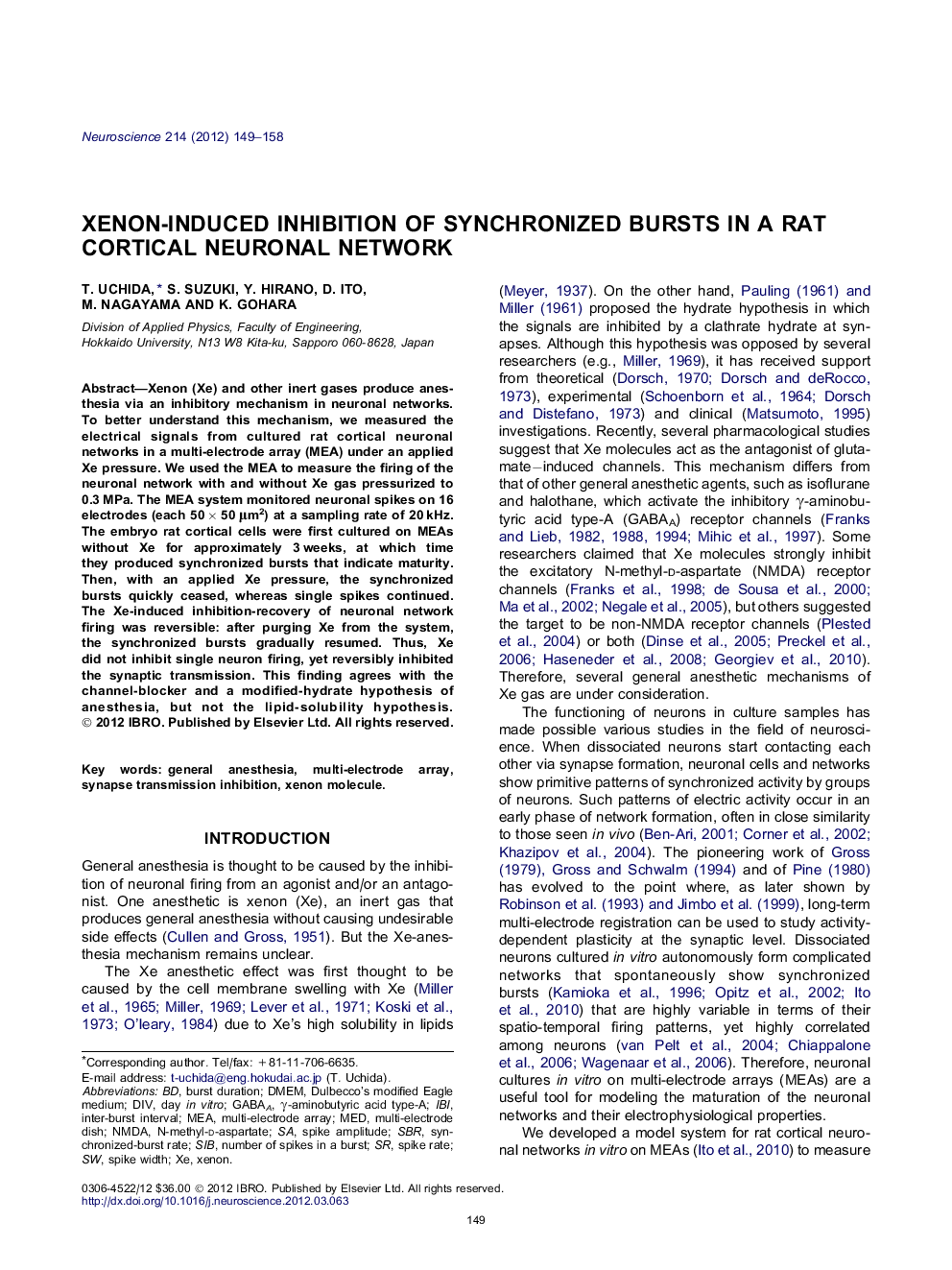| Article ID | Journal | Published Year | Pages | File Type |
|---|---|---|---|---|
| 6275721 | Neuroscience | 2012 | 10 Pages |
Xenon (Xe) and other inert gases produce anesthesia via an inhibitory mechanism in neuronal networks. To better understand this mechanism, we measured the electrical signals from cultured rat cortical neuronal networks in a multi-electrode array (MEA) under an applied Xe pressure. We used the MEA to measure the firing of the neuronal network with and without Xe gas pressurized to 0.3 MPa. The MEA system monitored neuronal spikes on 16 electrodes (each 50 Ã 50 μm2) at a sampling rate of 20 kHz. The embryo rat cortical cells were first cultured on MEAs without Xe for approximately 3 weeks, at which time they produced synchronized bursts that indicate maturity. Then, with an applied Xe pressure, the synchronized bursts quickly ceased, whereas single spikes continued. The Xe-induced inhibition-recovery of neuronal network firing was reversible: after purging Xe from the system, the synchronized bursts gradually resumed. Thus, Xe did not inhibit single neuron firing, yet reversibly inhibited the synaptic transmission. This finding agrees with the channel-blocker and a modified-hydrate hypothesis of anesthesia, but not the lipid-solubility hypothesis.
⺠Synchronized bursts of rat cortical neuronal networks ceased with Xe at 0.3 MPa. ⺠Single spikes of rat cortical neuronal networks remained with Xe at 0.3 MPa. ⺠Xe-induced inhibition-recovery of neuronal network firing was reversible.
